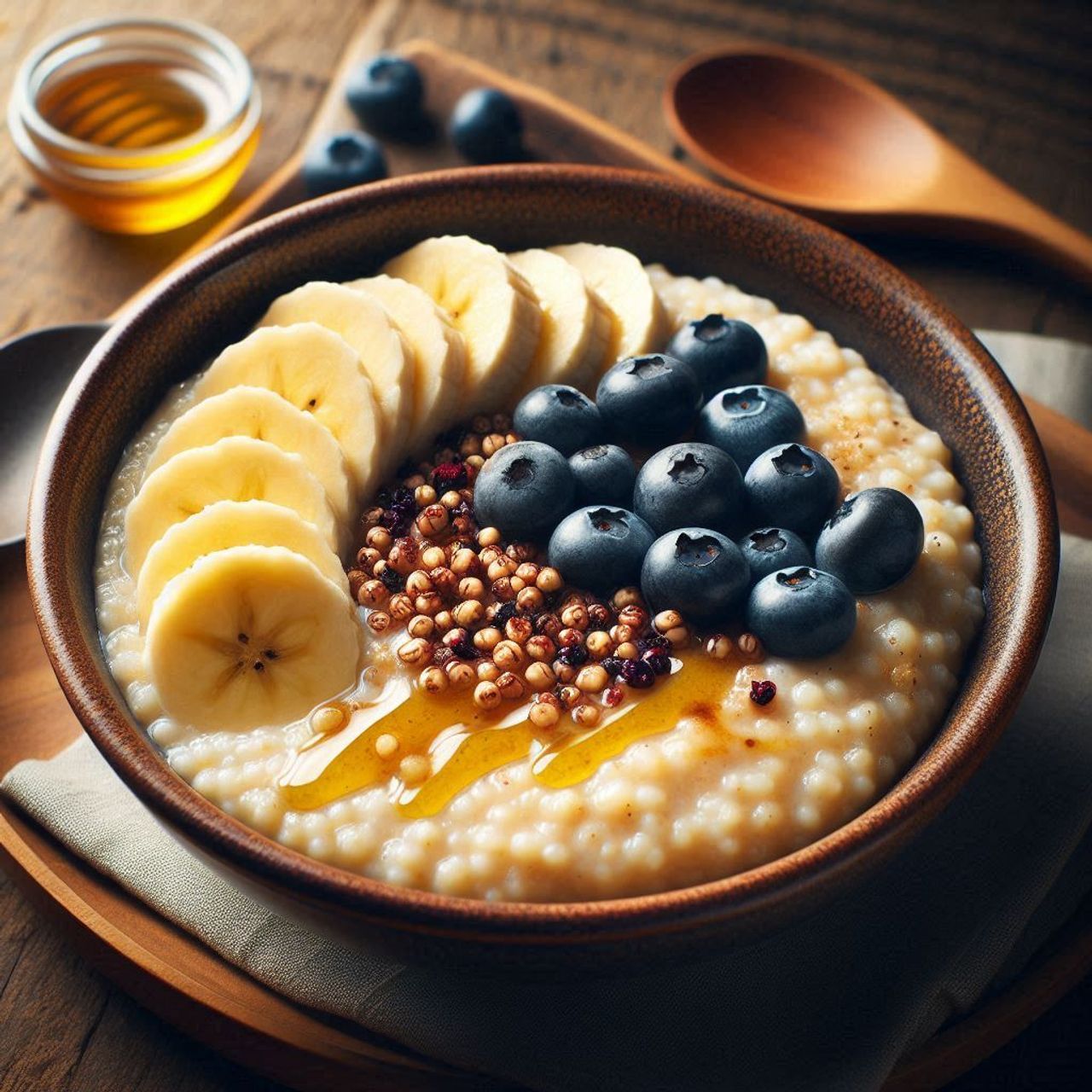Kodo Millet (Varagu)
The Ultimate Guide to Kodo Millet: Health Benefits, Cooking Tips, and Delicious Recipes
Kodo millet, a small and nutrient-rich grain, is becoming increasingly popular due to its impressive health benefits and versatility in the kitchen. This gluten-free grain is packed with essential nutrients and can be incorporated into a variety of delicious dishes. In this comprehensive guide, we'll explore everything you need to know about Kodo millet, including its health benefits, how to cook it, and some tasty recipes to try. At RiceBee.in, we provide the highest quality Kodo millet to help you embrace this nutritious superfood in your daily diet.
What is Kodo Millet?
Kodo millet (Paspalum scrobiculatum) is a type of cereal grain that belongs to the grass family Poaceae. It is one of the oldest cultivated crops, primarily grown in India and parts of Africa. Kodo millet is known for its resilience and ability to thrive in diverse climates. The grain is small, round, and has a slightly nutty flavor, making it a versatile ingredient in many dishes.
Nutritional Benefits of Kodo Millet
Kodo millet is a nutritional powerhouse with a wide range of health benefits:
High in Protein: Kodo millet is a good source of plant-based protein, making it an excellent choice for vegetarians and vegans.
Rich in Fiber: This grain is high in dietary fiber, which supports healthy digestion, helps control blood sugar levels, and promotes satiety.
Gluten-Free: Kodo millet is naturally gluten-free, making it suitable for individuals with celiac disease or gluten intolerance.
Packed with Vitamins and Minerals: Kodo millet is a rich source of essential nutrients, including B vitamins, iron, magnesium, phosphorus, and zinc.
Low Glycemic Index: The low glycemic index of Kodo millet helps in maintaining stable blood sugar levels, making it a suitable option for people with diabetes.
Antioxidant Properties: Kodo millet contains antioxidants that help protect cells from oxidative stress and reduce the risk of chronic diseases.
How to Cook Kodo Millet
Cooking Kodo millet is straightforward and similar to cooking other grains. Here’s a simple method for perfectly cooked Kodo millet:
Ingredients:
- 1 cup Kodo millet
- 2 1/2 cups water or broth
- Pinch of salt
Instructions:
Rinse the Millet: Place the Kodo millet in a fine-mesh strainer and rinse it under cold water to remove any impurities.
Combine Ingredients: In a medium saucepan, combine the rinsed millet, water (or broth for added flavor), and a pinch of salt.
Bring to a Boil: Bring the mixture to a boil over medium-high heat.
Simmer: Once it reaches a boil, reduce the heat to low, cover, and let it simmer for about 20-25 minutes or until the water is absorbed and the millet is tender.
Fluff and Serve: Remove the saucepan from heat and let it sit, covered, for 5 minutes. Fluff the millet with a fork and serve.
Delicious Kodo Millet Recipes
Kodo millet can be used in a variety of dishes, from savory to sweet. Here are a few recipes to get you started:
Kodo Millet Salad with Fresh Vegetables
Ingredients:
- 1 cup cooked Kodo millet
- 1 cup cherry tomatoes, halved
- 1 cucumber, diced
- 1 bell pepper, diced
- 1/2 red onion, finely chopped
- 1/4 cup crumbled feta cheese
- 2 tablespoons olive oil
- 1 tablespoon lemon juice
- Salt and pepper to taste
Instructions:
- In a large bowl, combine the cooked millet, cherry tomatoes, cucumber, bell pepper, red onion, and feta cheese.
- Drizzle with olive oil and lemon juice, then season with salt and pepper.
- Toss everything together and serve chilled.
Kodo Millet Porridge

Ingredients:
- 1 cup cooked Kodo millet
- 2 cups milk (dairy or non-dairy)
- 1 tablespoon honey or maple syrup
- 1/2 teaspoon cinnamon
- Fresh berries or sliced fruit
- Nuts or seeds for topping
Instructions:
- In a small saucepan, combine the cooked millet, milk, honey or maple syrup, and cinnamon. Heat over medium heat until warmed through.
- Transfer to a bowl and top with fresh berries, sliced fruit, and nuts or seeds.
- Serve warm.
Frequently Asked Questions About Kodo Millet
Is Kodo Millet Better Than Rice?
Kodo millet is often compared to rice due to its similar use in cooking. While both are healthy options, Kodo millet has higher protein and fiber content than white rice. Additionally, its lower glycemic index makes it a better option for maintaining stable blood sugar levels.
Can You Eat Kodo Millet Every Day?
Yes, Kodo millet can be eaten every day as part of a balanced diet. Its high nutrient content makes it a healthy addition to your meals. However, it’s important to eat a variety of foods to ensure you’re getting a wide range of nutrients.
Is Kodo Millet Good for Weight Loss?
Kodo millet can be beneficial for weight loss due to its high protein and fiber content, which can help you feel full and satisfied. Its low glycemic index also means it won’t cause rapid spikes in blood sugar, helping to control hunger.
Conclusion
Kodo millet is a nutrient-dense, versatile grain that can be incorporated into a wide range of dishes. Whether you’re looking to boost your protein intake, find a gluten-free grain alternative, or simply enjoy delicious and healthy meals, Kodo millet is an excellent choice. Try incorporating Kodo millet into your diet with the recipes provided, and enjoy the many health benefits this superfood has to offer. At RiceBee.in, we offer the finest quality Kodo millet and other healthy grains to support your wellness journey. Shop with us today and start enjoying the benefits of Kodo millet!



